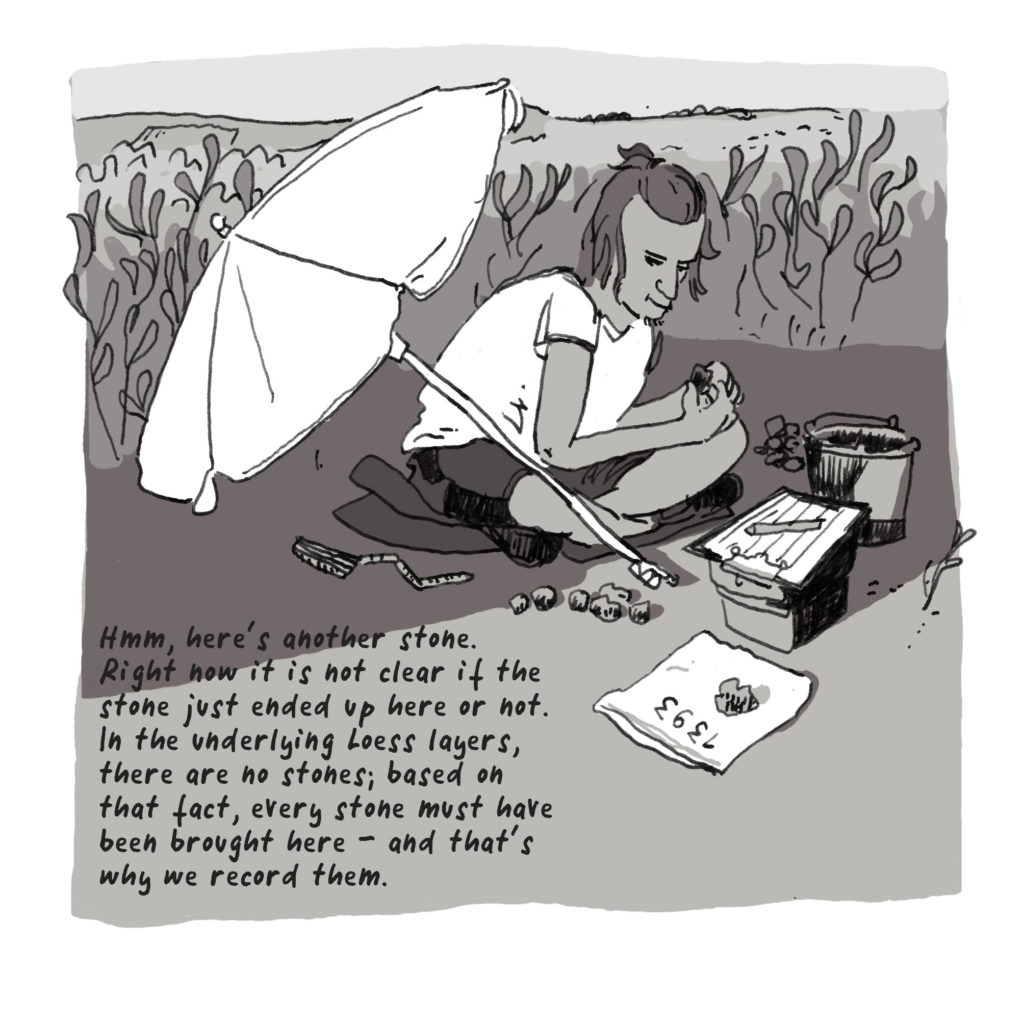
Bjarne has made himself comfortable underneath an umbrella. Stas comes and drops two big bags in front of him – „You’ve got Mail.“ They’re full of pieces of burnt daub. The clumps are from the trenches in which the house is being excavated. They were formed when the settlement burned. In fact, that’s the only reason that the clay floors and clay walls have been preserved for thousands of years; they were baked into durable material.
Bjarne’s task is to categorize every individual piece: is the material compact, i.e. without the addition of organic materials? Or is it more bumpy, broken up, made with the addition of something like straw? Do the chunks have a flat face? Or more than one? Or even the imprint of wood fibers or branches? With these characteristics, valuable information about the architecture of the house can be collected, in particular about the form of its interior (archaeologists call individual parts of the interiors „installations“). Bjarne grouses over the scale that Robert had given him and snatches the luggage scale from yesterday. „160 grams, that’s about right,“ he says and begins to work through Stas‘ bags. Only a couple of kilos to go.


